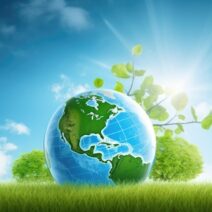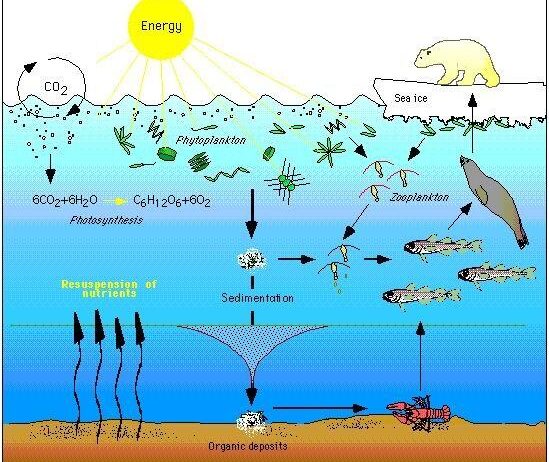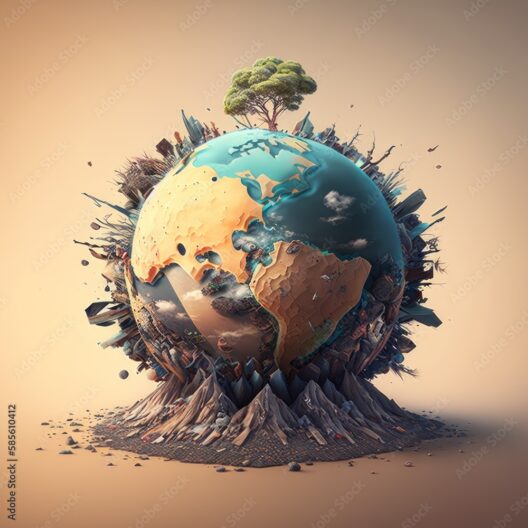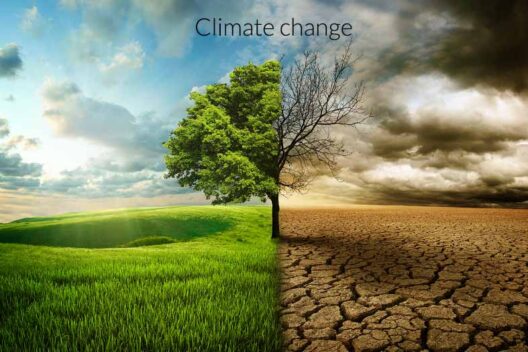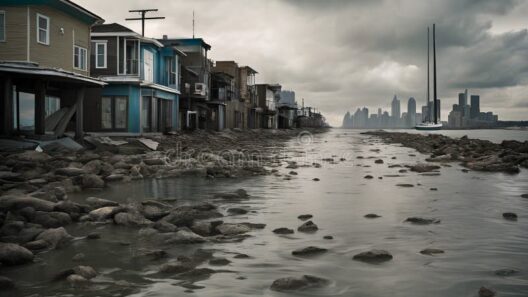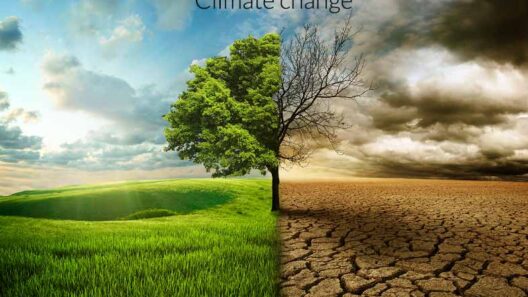Climate change is an accelerating phenomenon that relentlessly alters ecosystems across the globe, inciting a cascade of disruptions that affect species in ways that were once unimaginable. While the general public often perceives climate change as a monolithic issue, the reality is far more nuanced and complex. The interconnectedness of various organisms within ecosystems means that the impact of climate change reverberates through the food webs, one species at a time. This exploration delves into how climate change disrupts ecosystems, the mechanisms behind these disruptions, and the resulting implications for biodiversity.
To comprehend the unfolding crisis, one must first understand the vibrant tapestry that constitutes an ecosystem. Every organism, from the tiniest microorganism to apex predators, plays a pivotal role in maintaining ecological balance. When climate variables shift—be it temperature rises, altered precipitation patterns, or ocean acidification—the ramifications can be detrimental. For instance, rising temperatures can lead to the phenological mismatch between species, where the timing of biological events fails to align. Consider the migratory pattern of birds that rely on the availability of insects for sustenance during breeding seasons. If warmer temperatures prompt insects to emerge earlier, the birds may miss this vital food source, jeopardizing their reproductive success.
Moreover, changes in sea temperature and acidity are profoundly affecting marine ecosystems. Coral reefs, often referred to as the rainforests of the sea, are particularly susceptible. These ecosystems depend on a symbiotic relationship between coral polyps and zooxanthellae, a type of algae that provides the corals with necessary nutrients through photosynthesis. Climate change-induced stressors, such as increased sea temperatures, precipitate coral bleaching, where corals expel their algal partners. This not only endangers the corals’ survival but also dismantles the habitat that supports a myriad of marine life, leading to a potential collapse of local fisheries and devastating economic repercussions for communities reliant on these resources.
Upon examining terrestrial ecosystems, the phenomenon of shifts in habitat and species distribution becomes evident. As global temperatures rise, many species are forced to migrate toward cooler climates, often towards higher altitudes or latitudes. This geographic shift can precipitate intense competition among species, as indigenous organisms are confronted with newcomers that may carry different adaptive traits. For example, consider the iconic red fox, which has expanded its range into areas previously dominated by the Arctic fox. The latter faces not only a loss of habitat but also direct competition for food resources, threatening its existence.
Additionally, the intricate relationships among species are often rooted in specific climate conditions. Pollinators, like bees and butterflies, are adversely affected by temperature changes that disrupt flowering periods of plants. The ramifications extend beyond a mere imbalance—certain plants may fail to reproduce, diminishing plant diversity and affecting herbivore populations that rely on a variety of vegetation. Such events trigger a domino effect through the food chain, ultimately influencing predator populations and ecosystem services, such as crop pollination.
Furthermore, the alteration of ecosystems is not solely determined by species interactions. Physicochemical factors, such as soil quality and water availability, play a significant role. For instance, prolonged droughts, attributed to shifting climate patterns, can degrade soil health and diminish agricultural productivity. This not only affects food security for human populations but also has cascading effects on herbivores and the predators that rely on them. In this manner, the elevation of one factor, like moisture stress, can precipitate widespread ecological change.
Considering the interconnected nature of ecosystems leads to the harrowing realization that the repercussions of climate change are never isolated. Invasive species—often more resilient to changing conditions—can exacerbate the plight of native species already struggling to survive. The introduction of an alien species can disrupt the established balance, leading to declines or extinctions of native organisms. The brown tree snake in Guam is a poignant example, decimating local bird populations, altering ecosystem dynamics, and highlighting the vulnerability of isolated ecosystems to external pressures.
The plight of various species in the face of climate change evokes a deeper ethical consideration. As key stakeholders of the planet, humans have a moral responsibility to mitigate the impacts of climate change on biodiversity. Conservation efforts must not only aim to protect endangered species but also seek to maintain the integrity of entire ecosystems. Establishing wildlife corridors, enforcing sustainable practices, and enhancing biodiversity through habitat restoration are critical components of a holistic approach to ecological preservation.
In conclusion, the disruptions wrought by climate change on ecosystems manifest through a multifaceted interplay of species interactions, environmental conditions, and anthropogenic influences. Each organism plays a crucial role in the intricate web of life. As ecosystems continue to change and species face unprecedented challenges, the imperative to understand these dynamics becomes ever more urgent. It is not merely a matter of saving individual species; it is about recognizing the profound interconnectedness of life on Earth. The ongoing shifts underscore a vital truth: the health of our ecosystems is inextricably tied to the health of our planet—a realization that beckons immediate and sustained action to safeguard the delicate balance of life that sustains us all.

